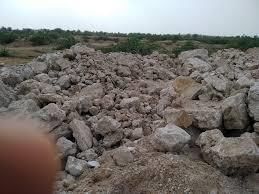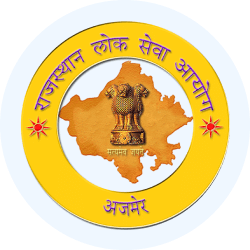RPSC RAS (Rajasthan) Exam > RPSC RAS (Rajasthan) Notes > RPSC Preparation: All subjects > Rajasthan: Flora, Fauna, and Minerals
Rajasthan: Flora, Fauna, and Minerals | RPSC Preparation: All subjects - RPSC RAS (Rajasthan) PDF Download
| Table of contents |

|
| Introduction |

|
| Flora of Rajasthan |

|
| Fauna of Rajasthan |

|
| Minerals in Rajasthan |

|
| Conclusion |

|
Introduction
- Rajasthan is rich in both flora and fauna, supporting a diverse range of animal species and forests. The state's bird sanctuaries are home to a variety of species, including the world's tallest black-necked stork, cranes, Indian bustards, and grey partridges. The diverse flora and fauna of Rajasthan create a captivating experience for tourists.
- In addition to its natural beauty, Rajasthan is also mineral-rich. The region boasts a variety of minerals, with seventy-nine types identified, fifty-eight of which can be economically exploited. Rajasthan holds a near-complete monopoly on the production of valuable minerals such as lead-zinc, sphalerite, limestone, calcite, chromite, silver, and superphosphate. It also produces significant amounts of sandstone, sinuous, and marble, contributing 90% to 100% of the national output.
- The strength of Rajasthan's mineral sector is further supported by substantial reserves of petroleum products, lignite, heavy fuel oil, lean gas, and bitumen. The state plays a crucial role in the manufacturing of lead, copper, and zinc.
Flora of Rajasthan

- Rajasthan features diverse landscapes, with one part dominated by the Thar Desert and the other showcasing the towering peaks of the Aravalli and Vindhya ranges. Forests in Rajasthan are primarily located to the east of the Aravalli range, covering about 9% of the total area. In the desert region, vegetation consists mainly of stunted trees, thorny shrubs, and some grasses, with significant growth occurring only during the monsoon season.
- The Kejri tree (Prosopis cineraria) is among the most commonly found trees in Rajasthan, serving as a source of both food and fodder. Its bean-shaped fruit, called sangri, is used for these purposes, while another fruit, Ker, is eaten as a vegetable. The tree itself is also used for its wood. Other notable trees that thrive in sandy soil include Akaro, and various shrubs such as Thor, Botdi, Babul, Anwal, Sewan, Dhaman, Boor, and Bhutut.
- Some grasses in Rajasthan play a role in soil conservation by binding the soil and providing fodder for cattle. The flora of Rajasthan also includes bamboo, Khejri, Peepal, Jamun, Salar, Ber, and Khajur (dates). The state's shrubs are noteworthy, featuring wild roses, ferns, and orchids. Additionally, Rajasthan is home to many plants with medicinal properties.
Question for Rajasthan: Flora, Fauna, and MineralsTry yourself: Which tree is commonly found in Rajasthan and is known for its bean-shaped fruit called sangri?View Solution
Fauna of Rajasthan

- Rajasthan is home to a rich variety of fauna, including mammals, reptiles, and vibrant bird species. Common animals in the region include antelopes and gazelles such as the Blackbuck and Chinkara. The Nilgai is frequently found in the open plains and foothills of the Aravallis, while the Chau Singha inhabits the hilly areas. Other animals found here include sambar, chital, rhesus macaques, langurs, jackals, wolves, Indian porcupines, desert foxes, Indian gerbils, five-striped palm squirrels, desert gerbils, and wild boars.
- A notable feature of Rajasthan's wildlife is its diverse cat family, which includes several big cats. The region is an excellent habitat for Indian tigers, leopards, panthers, jungle cats, and caracals. Many of these big cats find shelter in temple ruins, water bodies, and tall grasses, adding a unique charm to Rajasthan's wildlife. Some of these big cats are endangered and are protected in national parks.
- In addition to land animals, Rajasthan's aquatic life is dominated by crocodiles and gharials. Reptiles in the region include the Indian python (ajgar), Indian chameleon, and garden lizard. The common mongoose and Indian mongoose are also prevalent in the arid zones.
Minerals in Rajasthan

- Rajasthan State Mines & Minerals Ltd (RSMML) is one of the state’s most innovative projects and plays a significant role in India’s large-scale production of non-metallic minerals.
- RSMML operates as a multi-mineral, multi-location company, focusing on mining rock phosphate, brown coal, SMS grade carbonate, and gypsum.
- The company is a national leader in extracting and selling rock phosphate and gypsum and is globally recognized for its open-cast mining and metal processing of carbonate phosphate rock.
- As a government-owned corporation, RSMML specializes in the extraction and commercialization of high-grade phosphate rock, lignite, dolomite, and plaster (non-metallic resources) from its mines across Rajasthan.
- Besides agriculture, mineral mining is a major industry in Rajasthan, with 42 primary and 28 secondary minerals being extracted. Approximately two million people are employed in the mining sector throughout the state.
- The vast dunes in Rajasthan are rich in wollastonite, used primarily in ceramics, polymers, and as a paint filler, as well as lead, zinc, calcite (mainly used as a building material), slaked lime, rock sulfate (for inorganic fertilizers), silver, marble, natural stone (including eco-friendly serpentine marble), dolomite, emeralds, and garnets.
- In Western Rajasthan, substantial quantities of hydrocarbons have been discovered, with an estimated 1000 million metric tonnes of crude oil equivalent predicted in Barmer.
- Natural gas deposits of 25-30 billion cubic meters have been identified in the Jaisalmer basin region, including areas such as Manohar Tiba, Tanot, Dandewala, and Shahgarh.
- The Bikaner-Nagaur Valley also contains significant amounts of heavy oil.
Apatite
- Apatite, a captivating mineral, is prominently present in igneous rocks and can also manifest as a mineral layer.
- It is a naturally occurring phosphate mineral with distinctive chemical characteristics.
- Primarily located in Udaipur and Sikar regions of Rajasthan, apatite contributes significantly to the geological makeup of the area.
Asbestos
- Rajasthan stands as the primary hub for asbestos manufacturing within India.
- Asbestos deposits are predominantly concentrated in Rajasthan and are usually found in contaminated ultramafic intrusives amid the rocks of the Aravalli and Delhi supergroups.
- Both amphibole and chrysotile forms of asbestos can be discovered in Rajasthan.
Bauxite
- Bauxite, a mineral with diverse industrial applications, is mainly utilized in chemical and refractory sectors.
- Its uses range from aluminum metal extraction to the production of abrasive paper powder, refined petroleum purification, and cement paint.
- Rajasthan contributes a modest quantity of bauxite, estimated at around 3 million metric tonnes, with a notable presence in the city of Udaipur.
Beryl
- Beryl is a silicate composed of aluminium and beryllium and is the primary source of beryllium, which is lighter than aluminium.
- When heated and alloyed with copper, beryl forms an alloy with high tensile strength and resistance to repeated pressure.
- In Udaipur, Bhilwara, and Ajmer districts, beryl is found associated with mica pegmatite in mica mines.
Rhyolite/Basalt
- The Deccan Traps, a significant construction stone, are present in the southeastern districts of Rajasthan.
- Rhyolite is used for railroad ballast and construction in western Rajasthan, with quarries in Chechat, Ramganj, Suket, Morak, and Kota.
- Flaky limestone can be found in the Jhalawar region at Paroliya, Kishanpura, and Aroutiya.
Granite
- Granite deposits in Rajasthan are located in Alwar, Ajmer, Jaipur, Jodhpur, Jalor, Jaisalmer, Bhilwara, Pali, Barmer, Chittorgarh, Sikar, Nagaur, Rajsamand, Udaipur, and Tonk.
- Additional granite occurrences are found in Dungarpur, Banswara, Jhunjhunu, Sawai Madhopur, and Sirohi.
Marble
- Marble is extensively mined in Rajnagar, Rishabhdev, Andhi, Makrana, Bhaislana, and Ajmer.
Sandstone
- Rajasthan is a major exporter of sandstone, with abundant deposits found in Bikaner, Bharatpur, Bundi, Jodhpur, and Kota.
Conclusion
- Rajasthan's mineral industry evolved from a private company, Bikaner Gypsum Limited (BGL), which was established in 1947 in Bikaner. BGL expanded its operations by taking over the Jhamarkotra mines in 1969 and began producing phosphate rock at Jhamarkotra (Udaipur).
- To enhance and stabilize profits, the Rajasthan government acquired most of the remaining stock, leading to the rebranding of the company as Rajasthan State Mines and Minerals Limited (RSMML). RSMML now operates across four locations, focusing on the extraction of gypsum, rock phosphate, dolomite, and coal.
Question for Rajasthan: Flora, Fauna, and MineralsTry yourself: Which mineral is primarily used for aluminum extraction and production of abrasive paper powder?View Solution
The document Rajasthan: Flora, Fauna, and Minerals | RPSC Preparation: All subjects - RPSC RAS (Rajasthan) is a part of the RPSC RAS (Rajasthan) Course RPSC Preparation: All subjects.
All you need of RPSC RAS (Rajasthan) at this link: RPSC RAS (Rajasthan)
|
152 videos|95 docs
|
Related Searches



















